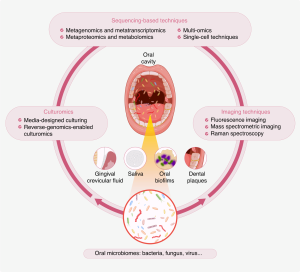The Role of 3D Printing in Custom Dental Prosthetics and Orthodontics
3 min read
Imagine a world where dentures fit perfectly the first time, braces are tailored to your teeth like a glove, and crowns are crafted in hours—not days. That’s the reality 3D printing is bringing to dentistry. No more messy molds, no more “close enough” fittings. Just precision, speed, and customization at a level we’ve never seen before.
How 3D Printing is Changing Dental Care
Dentistry has always been a mix of art and science, but 3D printing tips the scales toward perfection. Traditional methods rely on manual labor—wax molds, hand-sculpted crowns, and weeks of waiting. 3D printing? It’s like swapping a horse-drawn carriage for a sports car. Here’s how it works:
- Digital scans replace goopy impressions (thank goodness).
- CAD software designs prosthetics with microscopic accuracy.
- 3D printers layer biocompatible materials—resins, ceramics, even titanium—into fully functional dental parts.
And the best part? This isn’t some far-off future tech. It’s happening right now in cutting-edge clinics.
Custom Dental Prosthetics: A Perfect Fit, Every Time
Ever had a denture that slips or a crown that just… doesn’t feel right? 3D printing is solving those headaches. Let’s break it down:
Crowns and Bridges
Gone are the days of temporary crowns and multiple visits. With 3D printing, dentists can scan, design, and mill a permanent crown in a single appointment. The fit? Flawless. The material? Stronger than traditional porcelain. Patients walk out with a fully functional tooth in under two hours.
Dentures That Feel Natural
Traditional dentures are like off-the-rack suits—they kinda fit, but not really. 3D-printed dentures are bespoke. Each ridge, each contour matches the patient’s mouth perfectly. And because they’re digitally designed, adjustments are a breeze. No more “take it back to the lab” delays.
Dental Implants
3D printing isn’t just for the visible parts—it’s revolutionizing implants too. Titanium implant posts can now be printed with porous surfaces that encourage bone growth. Faster healing, better integration, and fewer complications. It’s a game-changer for patients with bone loss.
Orthodontics: Faster, Smarter, Less Noticeable
Braces used to mean years of metal brackets and awkward photos. Not anymore. 3D printing has given us:
- Clear aligners (like Invisalign) that are cheaper and faster to produce.
- Custom brackets that apply precise pressure exactly where needed.
- Expansion devices printed to match a child’s growing palate perfectly.
Orthodontists can now simulate entire treatment plans digitally, printing each aligner or appliance as needed. Fewer adjustments, shorter treatment times, and—let’s be honest—way better selfies during the process.
The Materials Making It Possible
Not all 3D-printed materials are created equal. Here’s what’s working in dentistry today:
| Material | Use Case | Advantage |
| Dental resins | Crowns, temporary prosthetics | High detail, fast printing |
| Ceramics | Permanent crowns | Natural appearance, durability |
| Titanium | Implants | Biocompatible, strong |
| Flexible polymers | Aligners, night guards | Comfortable, precise fit |
Researchers are even experimenting with bioactive materials that could one day help regenerate tooth structure. Imagine a filling that helps your tooth heal itself.
Challenges and Considerations
It’s not all smooth sailing, though. A few hurdles remain:
- Cost: High-end 3D printers are still pricey for small practices.
- Regulation: Not all printed materials are FDA-approved for long-term use.
- Learning curve: Dentists need training in digital workflows.
That said, as adoption grows, prices are dropping fast. What cost $100,000 five years ago might be $20,000 today.
The Future: What’s Next for 3D Printing in Dentistry?
We’re just scratching the surface. Here’s what’s on the horizon:
- At-home scans with smartphone apps feeding directly to dental labs.
- AI-assisted designs that predict optimal tooth shapes for function and aesthetics.
- Bioprinting of living tissues—maybe even whole teeth grown from a patient’s cells.
One thing’s for sure: the days of one-size-fits-all dentistry are numbered. 3D printing isn’t just changing how we make dental prosthetics—it’s redefining what’s possible in oral health.




